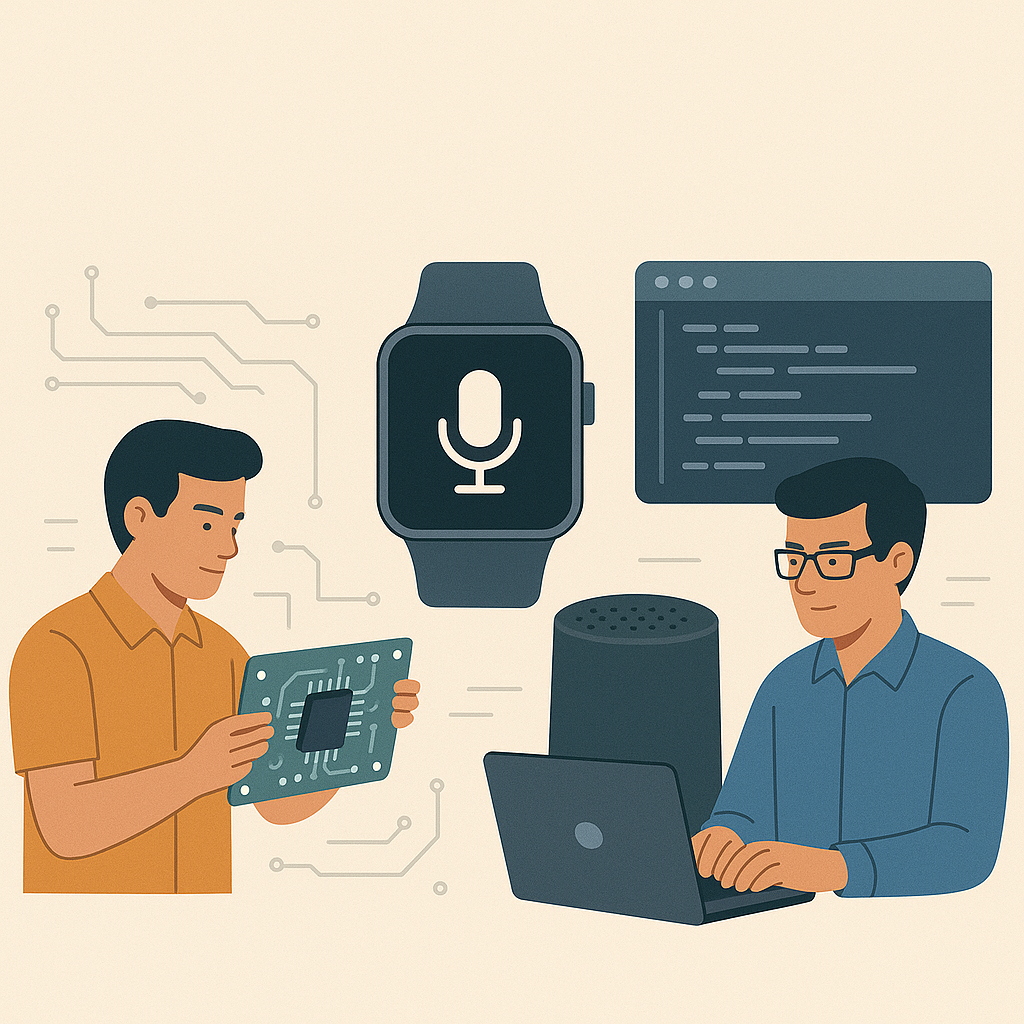
Have you thought about how your smartwatch understands your voice or can track your heart rate, and at the same time, can work all day on a single charge? Or how a smart speaker can instantly recognize your command in a noisy room? These moments feel effortless, but behind the scenes, there is a complex dance happening between hardware and software engineering teams.
From my personal experience working in both electrical engineering and product development, and also coordinating with so many software engineers through my journey, I have seen how the most impactful AI-powered devices don’t succeed because of software alone. Nor do they shine because of just brilliant hardware. It is the often-invisible collaboration between the two that makes the magic happen.
This is not limited to wearables or voice assistants. Think about modern smartphones, where facial recognition, AR apps and power-efficient cameras rely on finely tuned hardware and software integration. Or consider AI-powered drones, which depend on lightweight circuit boards and efficient control algorithms working in lockstep to stay stable in midair. Even smart home thermostats, robotic vacuum cleaners and digital health devices require tight cooperation between embedded electronics and intelligent code. And even outside of the Earth, space stations and rockets are the most extreme examples, where a glitch in either domain can jeopardize mission-critical performance.
This article explores how modern innovations are driven by the creativity and specialized expertise of software and electrical engineers.
Bridging Two Worlds
Electrical and software engineers are trained to think differently. Hardware engineers deal in voltage levels, impedance, thermals and silicon limitations. Software engineers speak in abstractions, logic flows, APIs and data pipelines. These two worlds might seem separate, but in AI-enabled products, they must be tightly aligned.
Running a real-time machine learning model on-device requires more than just clever code. It demands that the hardware can support the processing, that it has the right thermal envelope, and that it’s optimized for battery life. During the early part of my career, when I used to work on tablet designing, software models ran perfectly on simulators but couldn’t be deployed to actual hardware because of memory and compute constraints.
What fixed it? Early and open collaboration. We brought in hardware engineers early in the model design phase and involved software folks in the board layout reviews. That kind of cross-talk saved us months.
Constraints as Design Inputs
Hardware limitations sometimes can feel like a roadblock, but they often lead to more thoughtful software design. For example, a device may not support the sampling rate a software team initially desires, possibly due to power or bandwidth constraints. But instead of dialing back performance, this can push the team to optimize compressing models, explore quantization techniques, or rethink architecture.
In many cases, these issues lead to improving product performance and overall system requirements.
Building a Shared Language
One common problem in hardware and software collaboration is that they have different technical vocabulary. So, for example, hardware teams focus on signal integrity and PCB layout. But software teams are concerned with inference speed and latency. The most effective teams invest in mutual learning where hardware engineers gain awareness of software goals, and software engineers understand the physical limitations of the system.
Cross-disciplinary working sessions, joint design reviews and shared documentation go a long way in creating empathy and reducing miscommunication. The goal is to have an appreciation of how each decision affects the whole system.
Tools and Testing are not One-Sided
Many performance issues in AI devices straddle the line between hardware and software. Latency issues might stem from sensor configuration, not code. Anomalies in model behavior could be linked to noise on the power line or inconsistent clock signals.
That is why integrated testing environments are essential. When teams share debugging tools, test protocols and logs they can root-cause issues faster and more effectively. Collaborative debugging saves time, improves product quality and also will help strengthen team trust.
Decision Making in the Gray Zone
AI product development often enters a territory where the problem’s root cause is not clearly hardware or software. Is a drop in performance due to poor training data or poor sensor alignment? Is a power spike caused by firmware inefficiency or a voltage regulator flaw?
These gray areas require us as electrical engineers and software engineers to think in systems, not silos.
Building Cross-Aware Teams
Successful AI products are more and more built by teams with cross-functional fluency. Deep specialization is always a key, but there is growing importance in hiring engineers who are curious beyond their core expertise. Hardware engineers who understand software workloads and software engineers who appreciate board-level constraints tend to be more effective collaborators.
For Technical Leaders: Make the Invisible Visible
If you’re leading a team building AI-driven devices, one of the highest-leverage moves you can make is to cultivate visible collaboration between hardware and software groups. I suggest having an early alignment in the development process. Set up regular syncs, co-host design reviews, and promote shared tooling and metrics.
When both sides understand how their decisions affect the broader system, teams work more thoughtfully and cohesively. It is not just about shipping faster, but it is about building products that are more robust, more intelligent and more delightful to use.
Because in the end, even the smartest AI is only as good as the system that supports it, and that system is built on collaboration.


